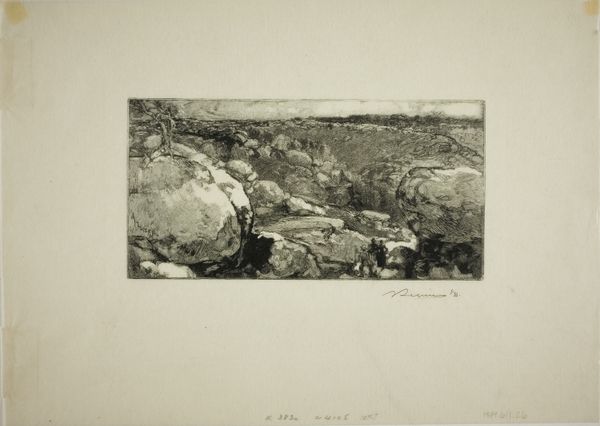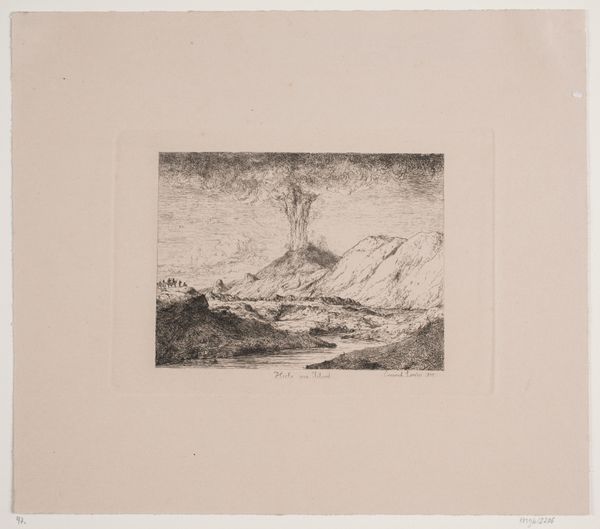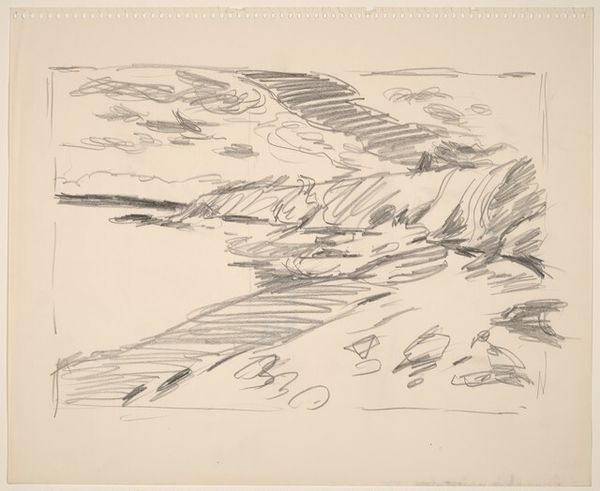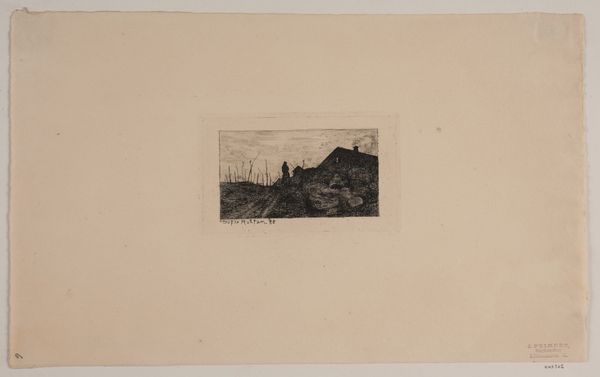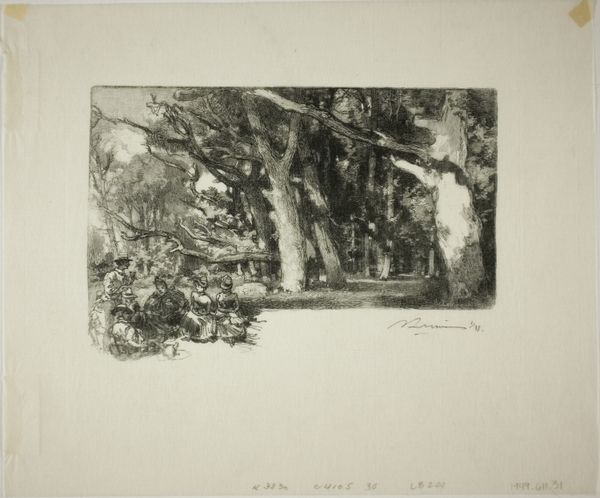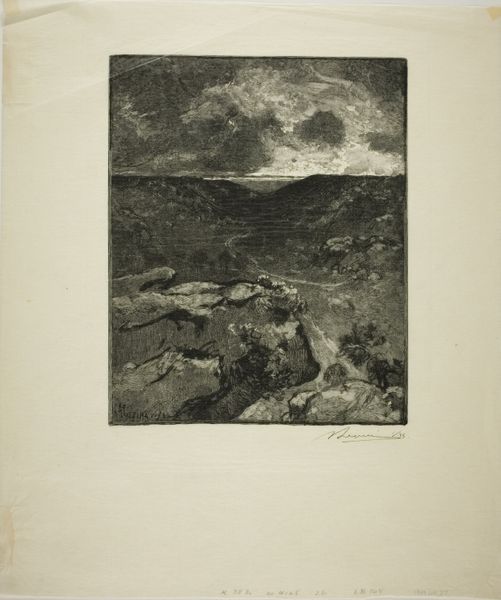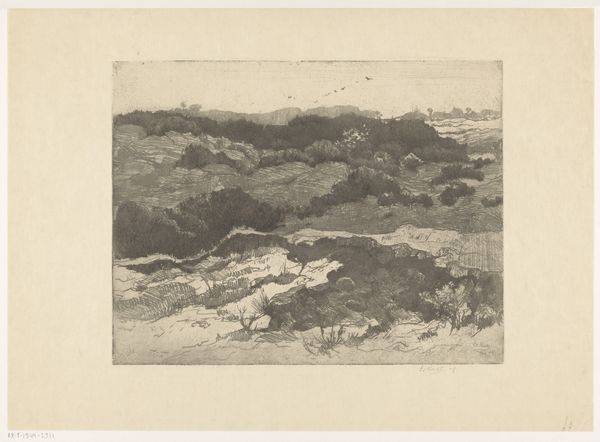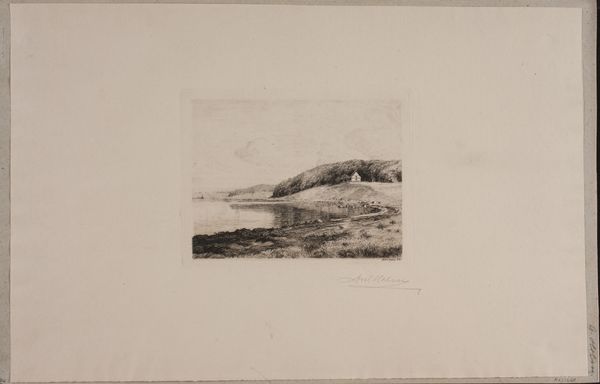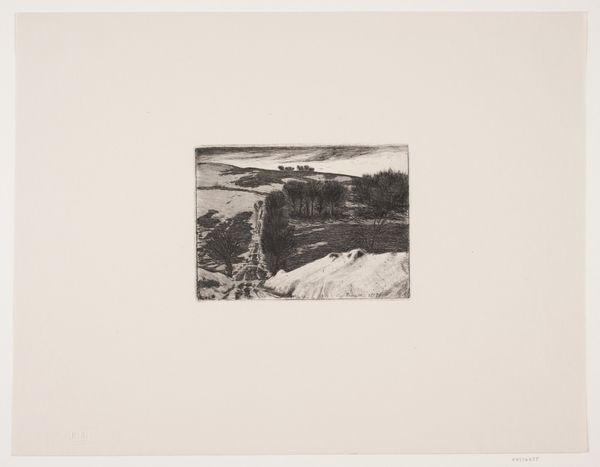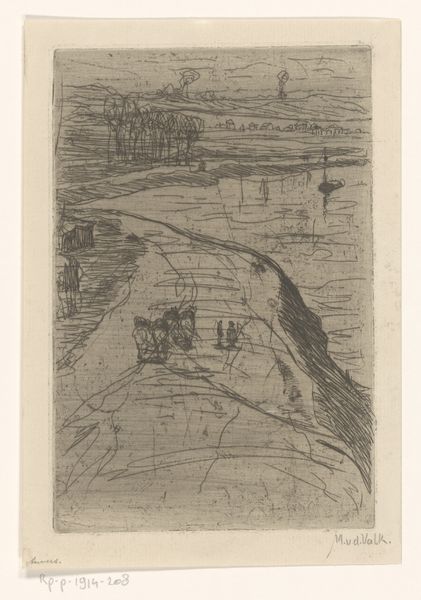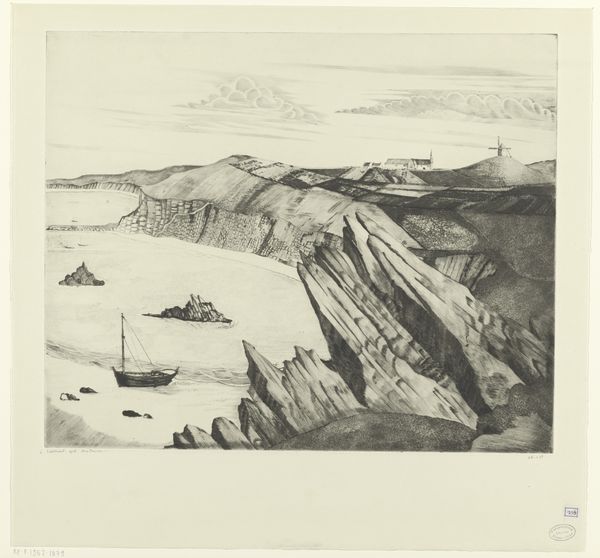
drawing, print, etching, paper, engraving
#
drawing
# print
#
etching
#
landscape
#
paper
#
engraving
#
watercolor
Dimensions: 81 × 120 mm (image); 177 × 214 mm (sheet)
Copyright: Public Domain
Curator: Looking at "Arbonne: Le Gros Sablon" by Auguste-Louis Lepère, likely created around 1908, I'm immediately struck by its almost austere beauty. The textures he achieved through etching and engraving on paper really make the scene. What is your impression of it? Editor: Stark, yes. I see a real isolation, almost as if this landscape exists outside human concerns. The rocks dominate, that sliver of sea and sky are pushed to the horizon—nature in control. It evokes a sense of being on the periphery. Curator: It’s fascinating how Lepère captures this sense of scale, isn’t it? Think about how landscape imagery was consumed at this time. Scenes of rural France spoke to ideas of national identity, tradition, and the "untouched" countryside, even as industrialization was rapidly changing the very landscape he depicts. Editor: True. But who has access to that “untouched” countryside? Then and now, these kinds of places—coastal landscapes in particular—are subject to the politics of ownership, access, and environmental concerns. We should be thinking about those layers too. Is this pristine landscape actually reflecting something much more complex, much more inequitable? Curator: Certainly. And the medium itself—printmaking—speaks to those complexities. Prints were often made and disseminated to broader audiences. So there is an inherent tension between the supposedly rarified experience of encountering such a place and the democratizing force of reproducing its image. Editor: It's compelling. What I keep coming back to is this idea of absence. Absence of people, absence of comfort... Lepère almost throws us into this raw space and dares us to contend with what that might mean. The contrast feels deliberately uneasy. Curator: I find it thought-provoking how he renders texture; the roughness of the rocks is so palpable. The almost watercolor effect softens what could have been a harsh landscape. The ambiguity between print, drawing, and watercolor democratizes the scene even further. Editor: Absolutely. And it opens up possibilities. Thinking about this landscape beyond the art, and how it becomes a place where all of those sociopolitical contestations become very real. Curator: Viewing “Arbonne: Le Gros Sablon” provides an example of the rich, and occasionally contradictory, space artworks occupy as both aesthetic objects and socio-historical documents. Editor: Definitely food for thought! This quiet, powerful image continues to raise relevant questions about the nature we see, whose gaze is it that does the looking, and who really gets to decide the context around all of it.
Comments
No comments
Be the first to comment and join the conversation on the ultimate creative platform.
